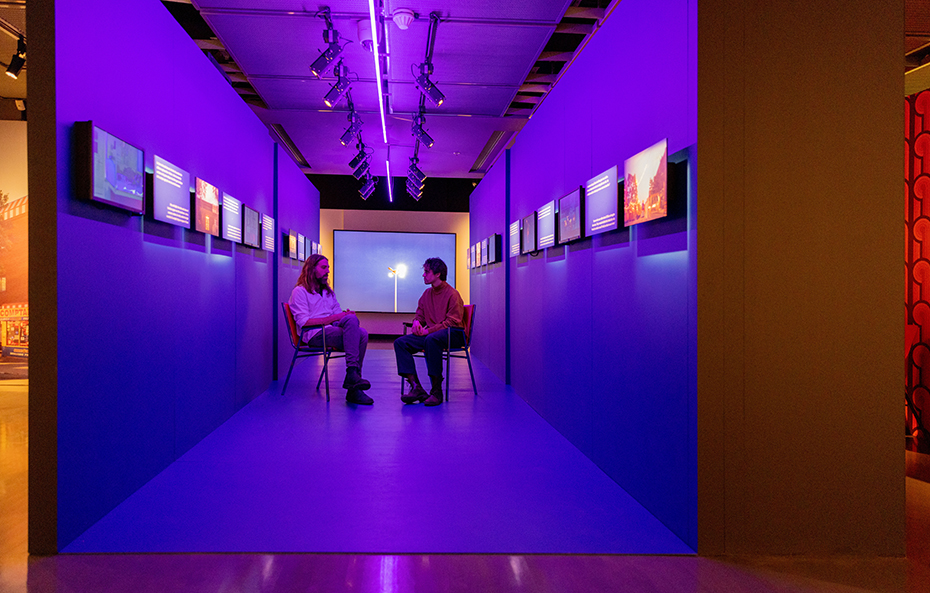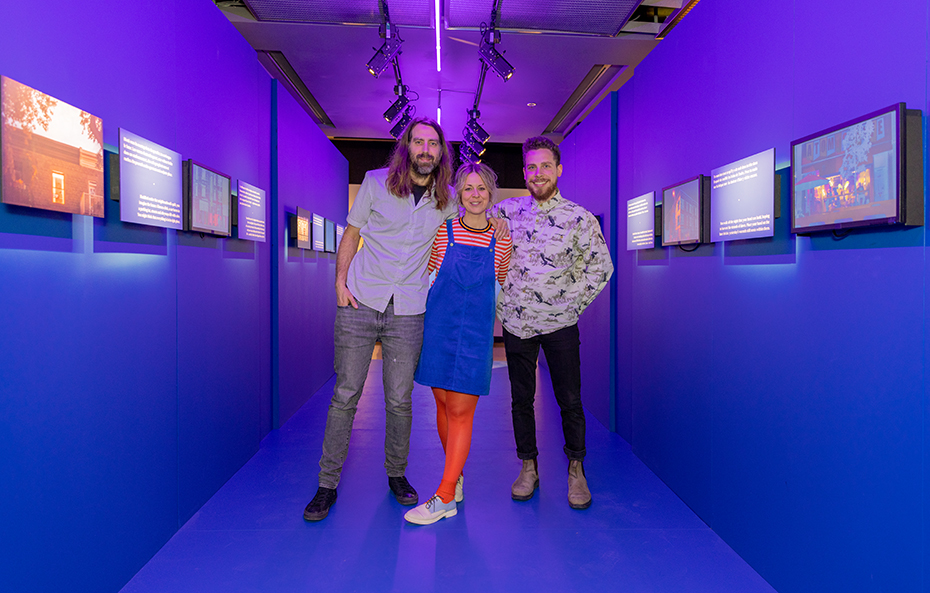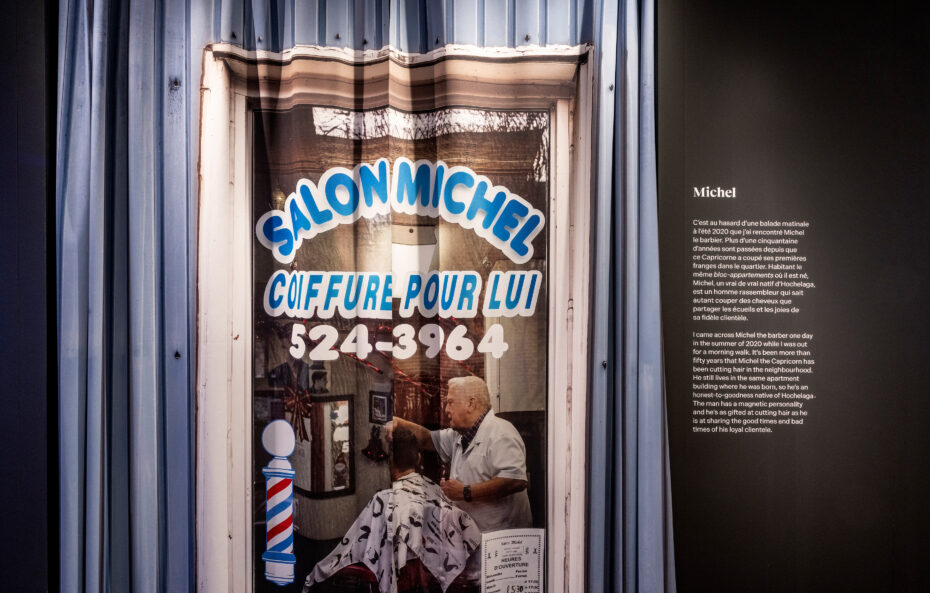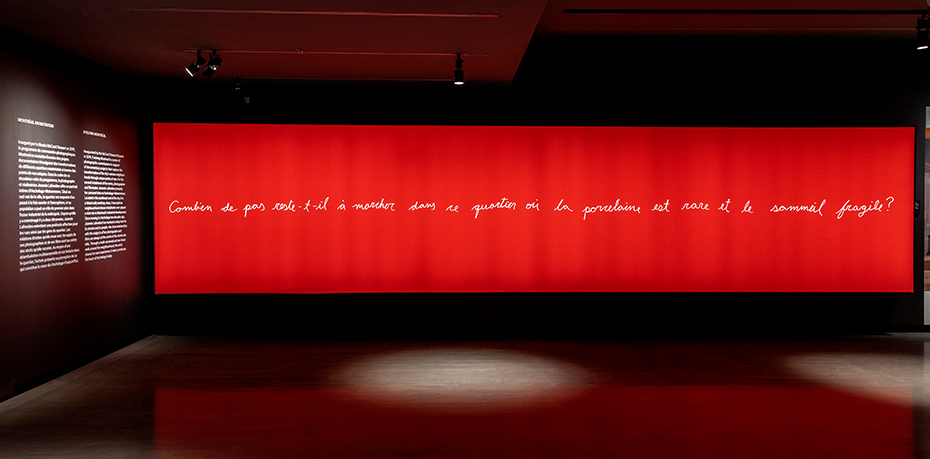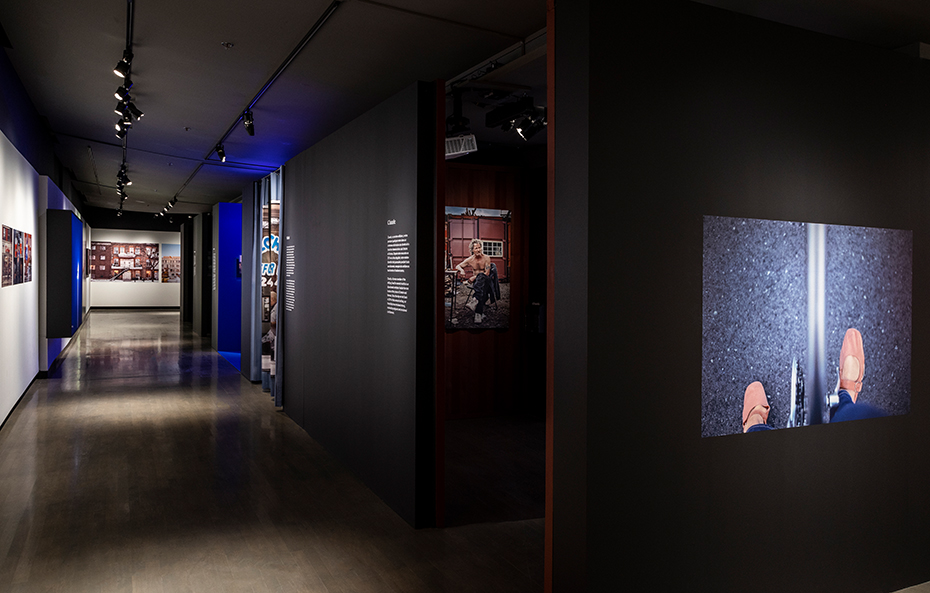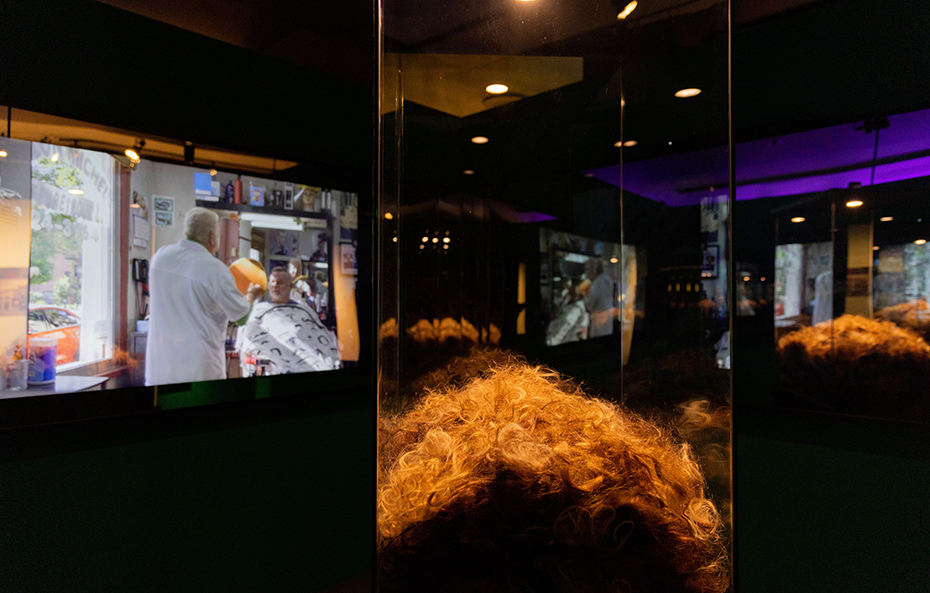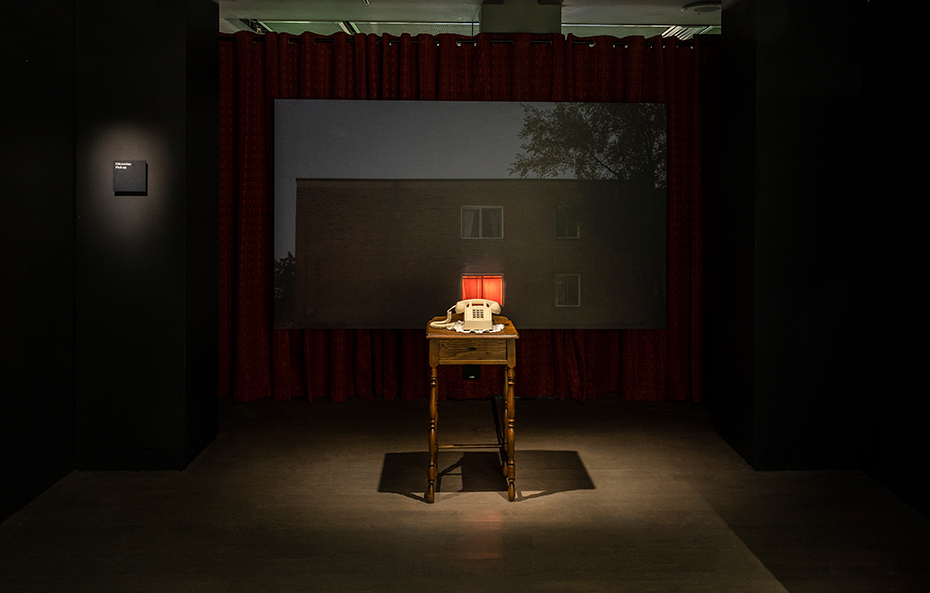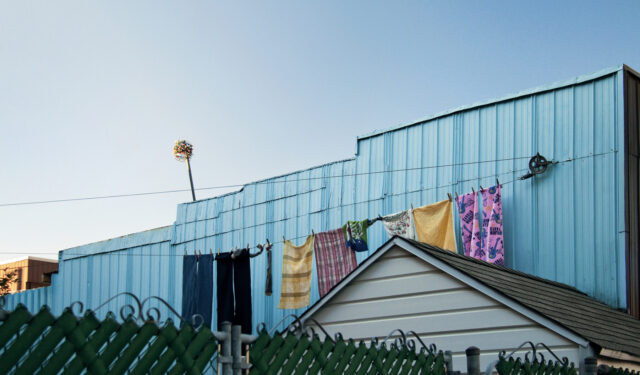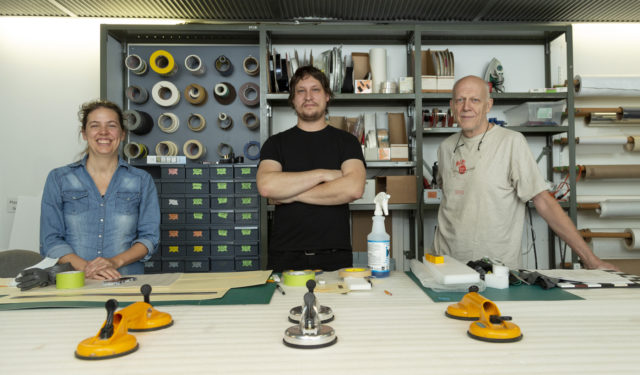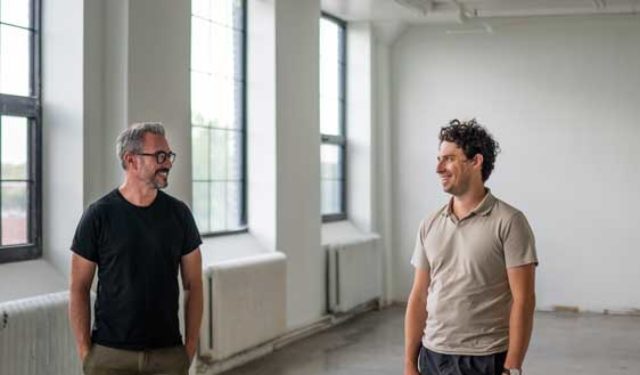The art of representing a perspective
Pierre-Étienne Locas tells us about the challenges of setting the stage for a decade of connections embodying Joannie Lafrenière's view of Hochelaga.
May 24, 2023
Under the neon lights of a midnight blue tunnel in the heart of the exhibition Hochelaga – Evolving Montreal by artist Joannie Lafrenière, I meet with Pierre-Étienne Locas, who created the exhibition design.
Pierre-Étienne: I’ve been working as a set designer for 18 years, primarily in theatre, creating different designs for a variety of directors. In the past few years, I’ve been looking for new opportunities, new challenges. My first museum experience was four years ago when I was hired to create the exhibition design for the Nights exhibition at the Stewart Museum. They wanted a set designer from the theatre who would bring a different approach.
I then went back to working in theatre until the Museum contacted me about this exhibition. I also do a variety of things like sculpture, land art, and drawing.
Alexis: How did you learn about the project?
Pierre-Étienne: It was summer, I remember, and I had to pull over along the Richelieu River to take the call. The voice said: “There’s a photographer named Joannie Lafrenière; you should check out her Website. If you’re up for it, it’s going to be an interesting exhibition.” I thought about it for a minute, and then said yes.
Alexis: What was your first meeting with Joannie like?
Pierre-Étienne: François Vallée, the exhibition project manager, had organized a lunch date with Joannie at Chic Resto Pop, in Hochelaga. It really set the tone for the project. We chatted and things really clicked between us. By the time we finished lunch, all three of us were keen to work together.
Alexis: What did your collaboration involve?
Pierre-Étienne: At the beginning, I didn’t really know what the exhibition was going to consist of. Joannie invited me over to see her stuff and that’s when I quickly realized that it was going to be more than just a photo exhibition. She showed me a whole collection of things representing various connections that she’s made over the years. Joannie enjoys making contacts and has kept records of all the people she’s met.
I understood that she didn’t want to tell the story of the neighbourhood as seen from the outside, or even from the viewpoint of a pedestrian, but from a more intimate vantage point. She is sharing a deeper, more personal connection. For example, she doesn’t just walk by the barbershop on the corner near her home; for years, she’s been going in to chat with the barber and his customers. The exhibition is full of connections like that. Joannie participates in the life of her neighbourhood and memorializes the people she meets, like a curator. When she showed me everything she had, it was like opening up a treasure chest.
Alexis: I understand that as the design of the exhibition took shape, someone else joined the team.
Pierre-Étienne: Joannie wanted to know if there was any literature about the neighbourhood, so she went to see her local bookseller who told her about Orange Pekoe, a collection of poems that Benoit Bordeleau wrote while walking around the neighbourhood. We found that Benoit’s poetry really complemented Joannie’s artistic gaze. Moreover, we wanted the exhibition to appeal to the heart more than to the intellect, for it to be felt rather than explained, so poetry was ideal.
Alexis: What challenges did you encounter when trying to incorporate all this into a museum exhibition?
Pierre-Étienne: The hardest thing to manage was the “pizza” effect. There was so much material that, when I began arranging it all in the space, it was like a bunch of ingredients piled on top of one another—a pizza with everything. We finally had the idea to organize the exhibition into sections, and everything started to fall into place.
Alexis: Actually, can you tell me about the special item in the middle of the barber section?
Pierre-Étienne: The hair! That was complicated. We got in touch with Green Circle Salons, an organization that helps salons ensure their beauty waste does not go to landfill, and it sent us cases full of hair. However, we’re in a museum, so it was absolutely critical not to let in any insects that could damage the artefacts in the collection. To ensure that anything that might be hiding in the hair would be killed, the hair was frozen for about three weeks as a precaution.1 But when we opened the boxes, we discovered that the hair was mixed in with some trash. So we had to put on gloves and masks, separate the clumps of hair, and sort through it to keep only the nicest pieces. It was time-consuming, but the hair looked great once we got it into the display case so we were happy.
Alexis: In a sense, the subject of the exhibition is Joannie’s love for her neighbourhood. How did you spatially represent something so personal?
Pierre-Étienne: For me, set design is a process of bringing architecture—which involves volumes and spaces—together with poetry. And poetry means transforming a feeling or an idea into an image. What I enjoy about my work is trying to find the right format to say the right thing, in the right way. There are many methods for doing this, but the best one involves connecting with others and their sensitivities. So the ingredients in the exhibition were Joannie, her love, Hochelaga, portraits, poetry, and then me. Put that all together, in the right amounts, and you have an exhibition.
Alexis: What did you get out of designing this exhibition?
Pierre-Étienne: The exhibition has primarily been an opportunity to connect with people. With the inhabitants of Hochelaga, of course, but especially with Joannie. Together, we have reflected on what it means to live in a neighbourhood, what it means to be a human in the world, and I found it very inspiring. Projects come and go, but connections remain. That’s actually what the exhibition is about. Neighbourhoods may evolve, but what really stays with us are the connections we make.
NOTES
1. As an organic material, hair is very attractive to insects that can cause major, and irreversible, damage to museum and archival collections. It is therefore essential to take preventive measures.

